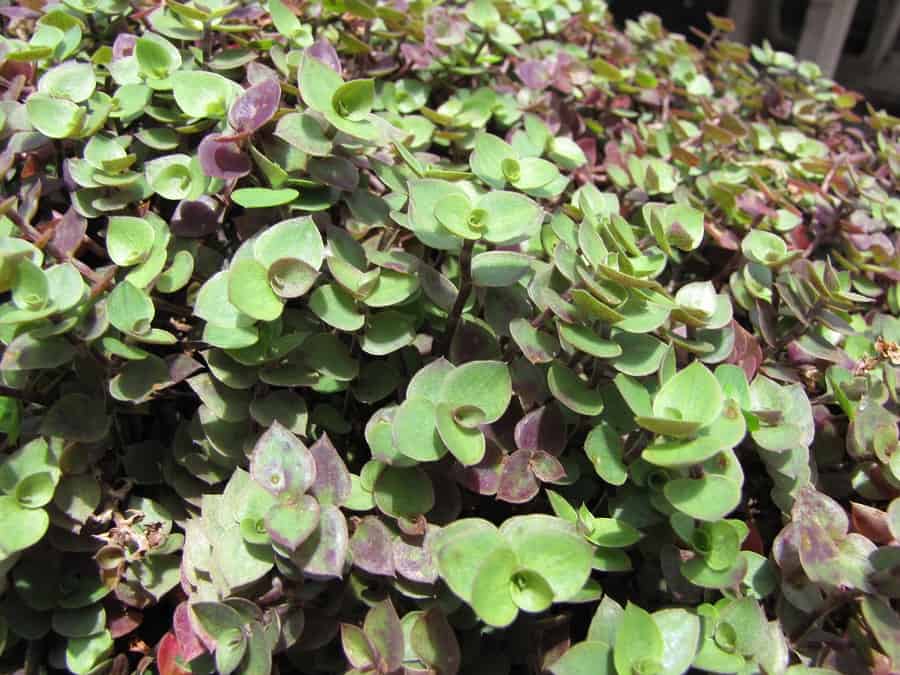Callisia repens (Creeping inchplant), native to Central America, is a perennial succulent plant that belongs to the Commelinaceae family.
Despite being a small plant, it’s a large plant in beauty that can give life and color to any space.
Its leaves are beautiful, showy, and although it does not exceed 30 cm in height.
It produces long and fine upright stems, with a creeping tendency as they grow and from which small bright green leaves emerge, heart-shaped or softly lanceolate, and with a smooth texture.
Callisia repens ‘Turtle Vine’ Care
Callisia is a very rustic plant that does not require particular cultivation.
It adapts quite well to many environmental situations, but being a plant native to warm countries, it prefers not too cold temperatures during the winter months.
Substrate:
This plant does not require a specific substrate, it tolerates any substrate, as long as it is organic and has excellent drainage.
You can prepare a good substrate yourself for your Callisia repens or buy a specific substrate for succulents.
You can prepare a mixture, in equal parts, of garden soil with siliceous sand, peat, and leaf mulch or soil for indoor plants adding some material to help the drainage of the substrate (such as perlite, gravel or pumice stone).
If you have the raw materials, you will get excellent results.
You may like: Hoya compacta
Watering:
The stems of this plant are fragile. So when watering, don’t forget this natural condition.
Water a lot in hot periods, especially when the summers are very intense.
Use water at room temperature.
The opposite will occur in winter.
Once a month will be enough, making sure the soil is completely dried.
Another important tip is to keep the leaves from getting wet for a long time. Eliminate excess water in them to prevent deterioration.
Illumination:
It needs good lighting; it should never be placed in very sunny places because the leaves can burn.
The specimens of this plant that live in darkness develop very long stems and few leaves. So give it a lit place, and you will see how your plant starts to improve.
Fertilizer:
From the spring and throughout the summer, it must be fertilized every two weeks using a good liquid fertilizer, diluted in the water.
Avoid buying fertilizers, with high contents of chemical elements.
The best fertilizers are those that contain: nitrogen, phosphorus, and potassium, also containing microelements.
Temperature:
Callisia repens grow and develop in temperatures ranging from 15°C/59°F to 30°C/59°F.
Just keep in mind that they are frost intolerant; you must take care of your Callisia repens from cold winter winds.
Diseases:
Callisia repens is a very resistant plant to pests. Just take care of the watering of your plant to prevent fungus from forming on the roots.
It’s also good to take care of this plant for mealybugs and aphids.
Plantation or transplant:
In the case your plant has grown a lot and doesn’t have much room to grow, it’s best if you change the pot.
If there isn’t enough space for the roots, the plant will not grow properly.
So you should get a pot at least about 2 cm larger than the plant, and transplant.
Propagation:
Choose a leaf to propagate the plant. You simply have to gently pull the leaf from the stem to avoid damaging the plant.
Cut it as clean as possible, and when you take the leaf, do it from a piece of the stem.
This way, you will get the new plant to grow healthy. Reproducing a succulent by cuttings is the most fun, easy, and cheap way to do it.
Follow these tips.
1. Let the leaf or cuttings dry:
Once you have made the cutting or have taken the leaf of your succulent, let it dry.
You can let it dry for one to three days, depending on the time of year in which you make the cuttings. Obviously, in summer, it will dry sooner.
2. Watering the cuttings or leaves:
While succulents don’t need to be watered every day, leaves and cuttings do. You should avoid overwatering.
You can use a spray bottle for this, avoiding puddling the soil.
Soon, new roots will grow, and you will quickly see how your new plant grows.
Pruning:
They do not need pruning. But you can remove the leaves that are beaten or wilted, so the plant is able to grow better.
